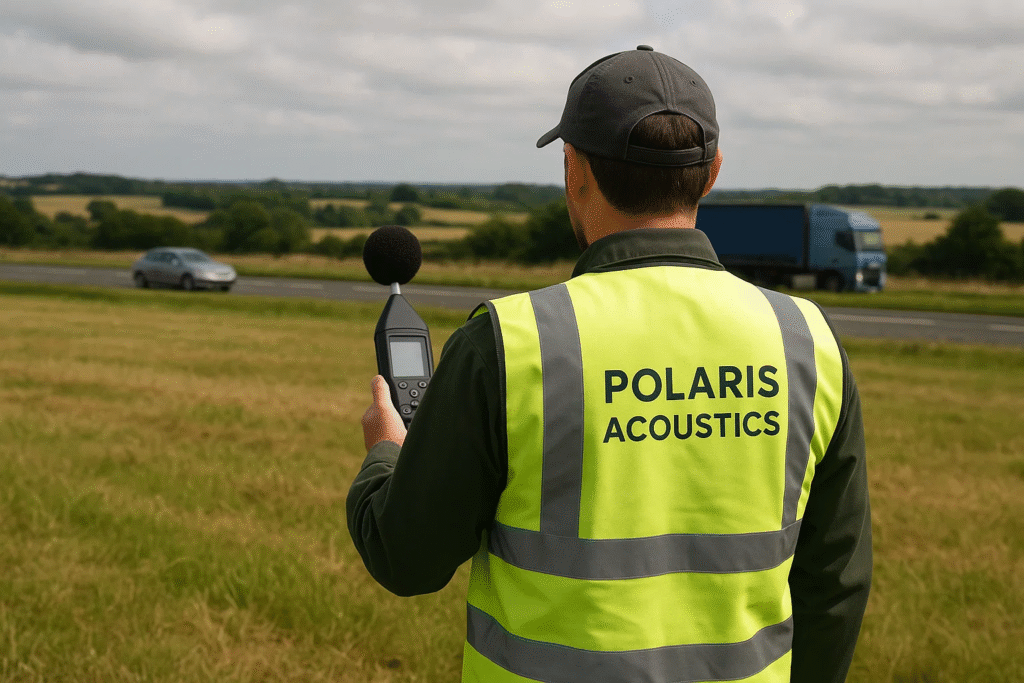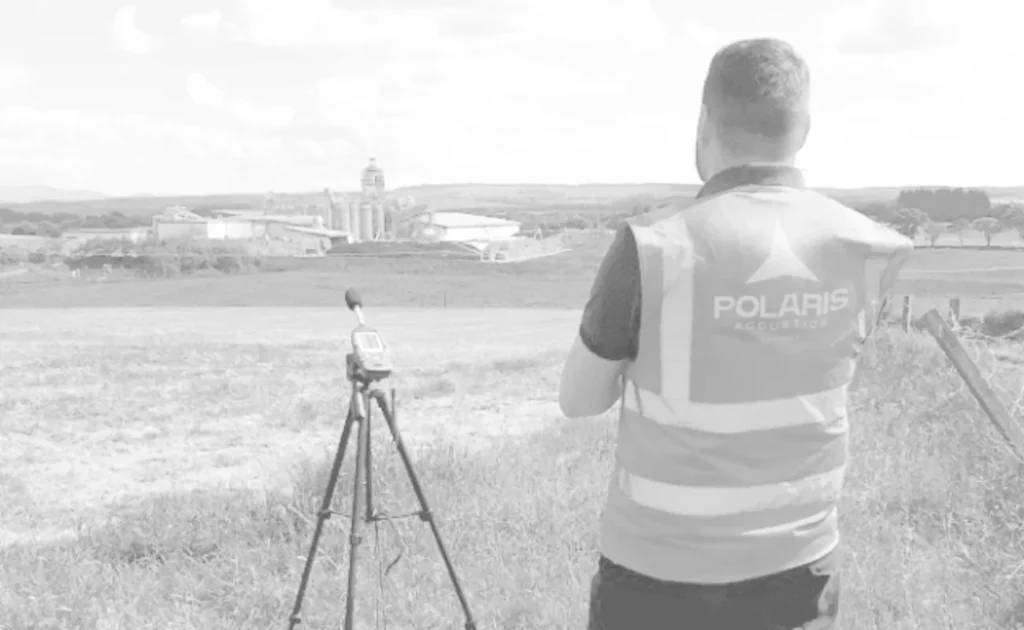An acoustic report for planning is an essential component of many planning applications in the UK. As we enter 2025, the importance of these reports continues to grow due to stricter regulations and increasing urbanisation. In this guide, we’ll explore what an acoustic report for planning entails, why it’s crucial, and how it helps secure planning permission for your project.

What Is an Acoustic Report for Planning?
An acoustic report for planning is a technical document that evaluates the noise impact of a proposed development. It is often required by local councils to assess whether a project meets noise standards and regulations. The report ensures that:
- Noise levels are within acceptable limits for the intended use of the site.
- Appropriate measures are in place to mitigate potential noise issues.
- The development aligns with standards such as BS 8233:2014: ‘Guidance on Sound Insulation and Noise Reduction for Buildings’.
Typical developments requiring an acoustic report for planning include:
- Residential projects near busy roads, railways, or industrial areas.
- Mixed-use developments with commercial and residential components.
- Industrial facilities or other noise-generating projects.
Why Do You Need an Acoustic Report for Planning in 2025?
The demand for acoustic reports for planning is rising due to:
1. Stricter Noise Regulations
In 2025, local councils are placing greater emphasis on environmental impact, including noise pollution. An acoustic report ensures compliance with national and local standards.
2. Urban Growth and Noise Challenges
As cities expand, developments are increasingly located in noisy environments. Acoustic reports address these challenges, ensuring comfortable living and working conditions for future occupants.
3. Sustainability and Community Well-Being
Modern planning policies prioritize sustainability and quality of life. By assessing and mitigating noise, acoustic reports contribute to healthier, more livable communities.
What Does an Acoustic Report Include?
A comprehensive acoustic report for planning typically contains the following elements:
1. Noise Surveys
Detailed measurements of existing noise levels on-site, often conducted over 24 hours to capture daytime and nighttime conditions.
2. Noise Impact Assessment
Analysis of how the proposed development will affect and be affected by noise. This includes:
- Assessment against BS 8233 and other relevant standards.
- Prediction of future noise levels based on the development’s use.
3. Mitigation Measures
Recommendations to reduce noise impact, such as:
- Acoustic barriers or fences.
- Enhanced glazing or soundproofing materials.
- Strategic building orientation and layout adjustments.
4. Compliance Statement
Confirmation that the project meets planning regulations and noise standards, ensuring a smoother approval process.
The Process
Preparing an acoustic report involves several key steps:
- Initial Consultation: Understanding the development’s location, scope, and potential noise sources.
- Site Visit: Conducting noise surveys to collect accurate data.
- Data Analysis: Using software and standards like BS 8233 to evaluate noise levels and impacts.
- Report Preparation: Compiling findings and recommendations into a comprehensive document.
- Submission: Providing the report as part of the planning application package.
Working with experienced acoustic consultants ensures accuracy and compliance, increasing the likelihood of planning approval.
Acoustic Assessments and BS 8233
BS 8233 is used for most of our acoustic assessments. This is because it provides guidance on acceptable noise levels in various environments, including:
- Residential Spaces: Guidelines for bedrooms, living rooms, and outdoor areas.
- Workspaces: Noise limits for offices and other commercial buildings.
By referencing BS 8233 in an acoustic report, developers can demonstrate adherence to recognized standards, addressing council concerns effectively.
Key Trends for Acoustic Reports in 2025
1. Increased Scrutiny from Local Councils
Councils are demanding more detailed noise assessments to address community concerns and environmental impact.
2. Technological Advances and Upcoming Changes
New tools and software make noise modelling more accurate, enabling precise predictions and solutions. But also there a number of new significant changes to BS 8233.
3. Focus on Sustainable Development
Acoustic solutions are increasingly integrated with sustainable building practices, such as using green roofs for noise reduction.

Why Choose Polaris Acoustics for Your Acoustic Report for Planning?
With years of experience in acoustic consultancy, our team at Polaris Acoustics specialise in delivering accurate and reliable acoustic reports for planning. Some of the reasons to work with us include:
- Comprehensive Noise Assessments: Tailored to your project’s specific needs.
- Timely Delivery: Keeping your planning application on schedule.
- Proven Results: Whether your site is tranquil or noisy, we can find a solution to help gain consent for your application.
Get Your Acoustic Report for Planning in 2025
If you’re preparing a planning application, don’t let noise concerns slow you down. Contact us today for professional acoustic consultancy and secure your planning permission with confidence. Let’s make 2025 your most successful year yet.




